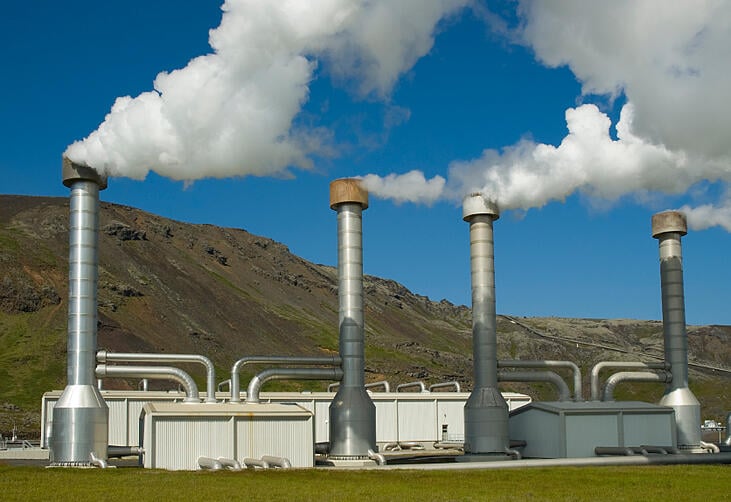This post is one in a series featuring the complete slate of advanced energy technologies outlined in the report This Is Advanced Energy.

Geothermal power taps into the high-temperature hydrothermal resources of the earth to generate electricity. There are three main types of geothermal technologies: dry steam, ash steam, and binary. Dry steam plants withdraw steam directly to drive a turbine. Flash steam, the most common geothermal technology used today, pumps high-temperature geothermal fluids at high pressure into a low-pressure tank, which causes the fluids to vaporize (or “ ash”) so they can be used to drive a turbine. A binary cycle is a closed-loop process where low-temperature geothermal fluids are used to heat a second fluid with a low boiling point (e.g., refrigerants or propane), which in turn drives a turbine. Binary cycle power plants are expected to dominate future markets because low-temperature resources are more plentiful and generally easier to access. Another technology, enhanced geothermal system (EGS), is still in development but has the potential to unlock more than 100 GW of geothermal power in the United States, enough to meet about 20% of current electricity needs. EGS can be more widely deployed than other geothermal technologies because it does not require the presence of a naturally occurring geothermal fluid. With EGS, deep wells are drilled to reach temperatures sufficient for binary geothermal systems. Fluid is then introduced underground, heated by the surrounding rock, and recovered to drive a binary power plant.
At the end of 2014, there was 3.5 GW of geothermal capacity in the United States, with an additional 1.3 GW under development, mostly in Nevada, California, Oregon, and Utah. With a net operating capacity of 725 MW, enough to power 725,000 homes, The Geysers in California is the world’s largest complex of geothermal power plants. Thanks to plants such as this, California generates 6% of its total electricity from geothermal resources. After California, Nevada is the second-largest producer of geothermal power in the country, with a capacity of 566 MW across 22 operating plants.
New geothermal plants have relatively high capital costs, as well as ongoing costs for drilling new wells to maintain output. However, they have no fuel costs and operate at very high capacity factors, making geothermal power an excellent source of baseload electricity. The levelized cost of geothermal production is estimated at approximately $89-$142/MWh, making it competitive with technologies such as coal ($66-$151/MWh) and nuclear ($92-$132/MWh). Depending on local conditions, geothermal can be very cost-effective. For example, Chena Hot Springs in Alaska has decreased energy costs for the community by 80%, from 37 cents to 7 cents per kWh.
Learn more about electricity generation and the full suite of advanced energy technologies with This Is Advanced Energy, available for free at the link below:
